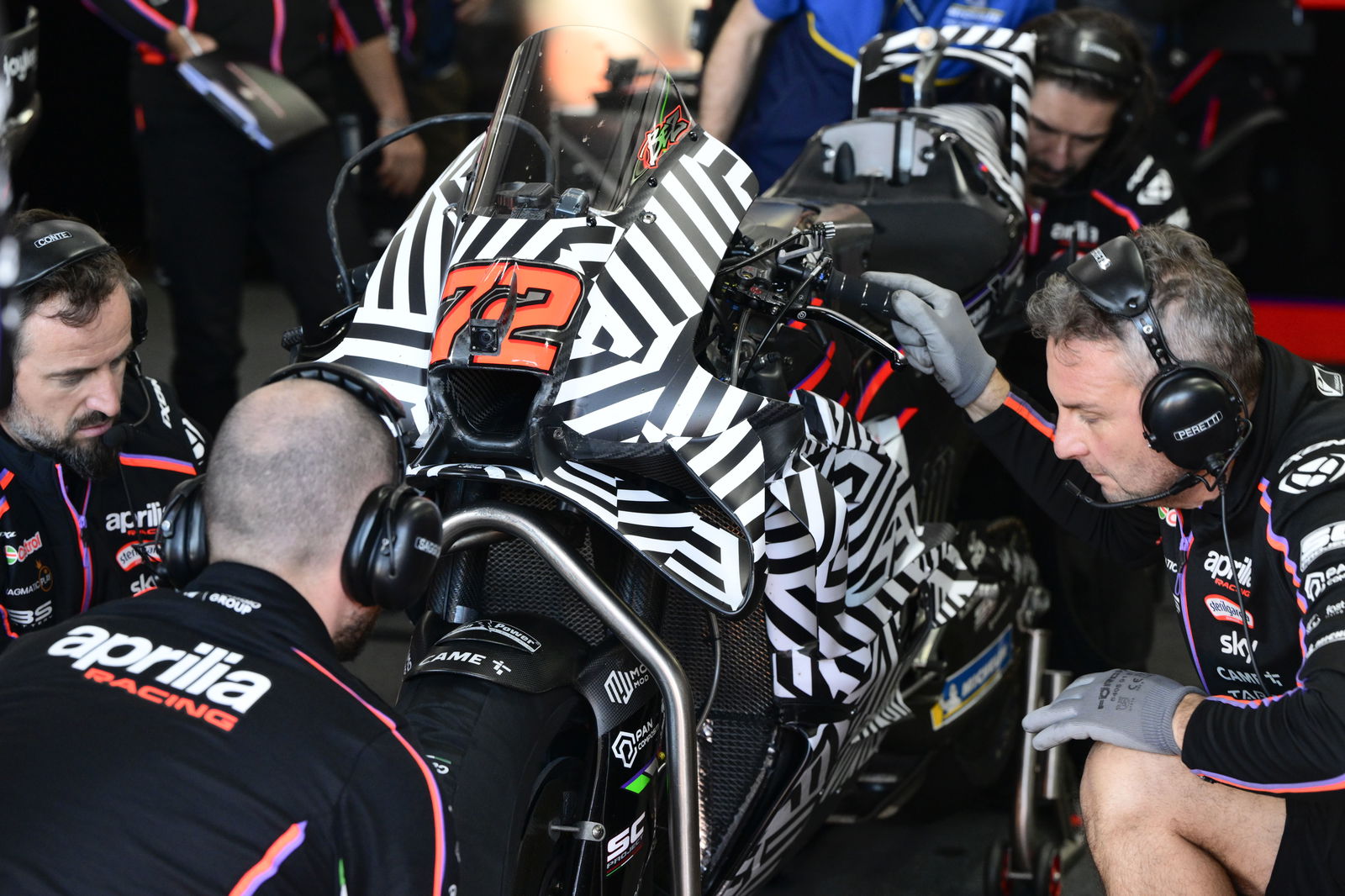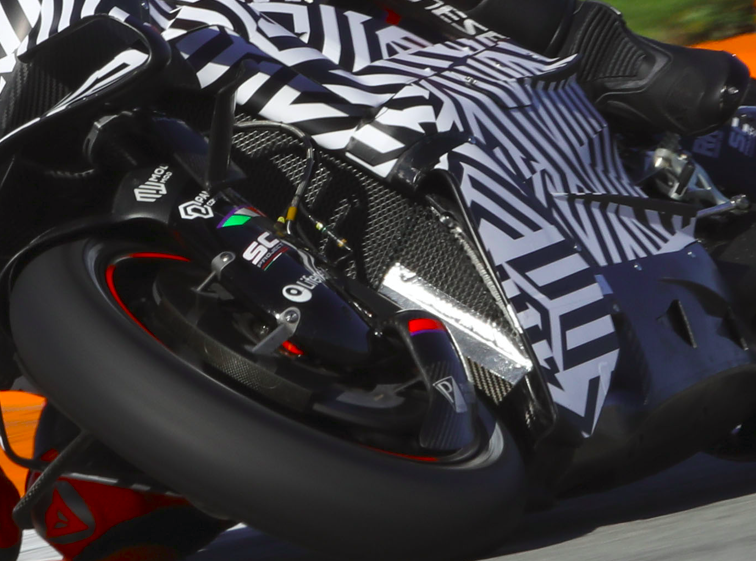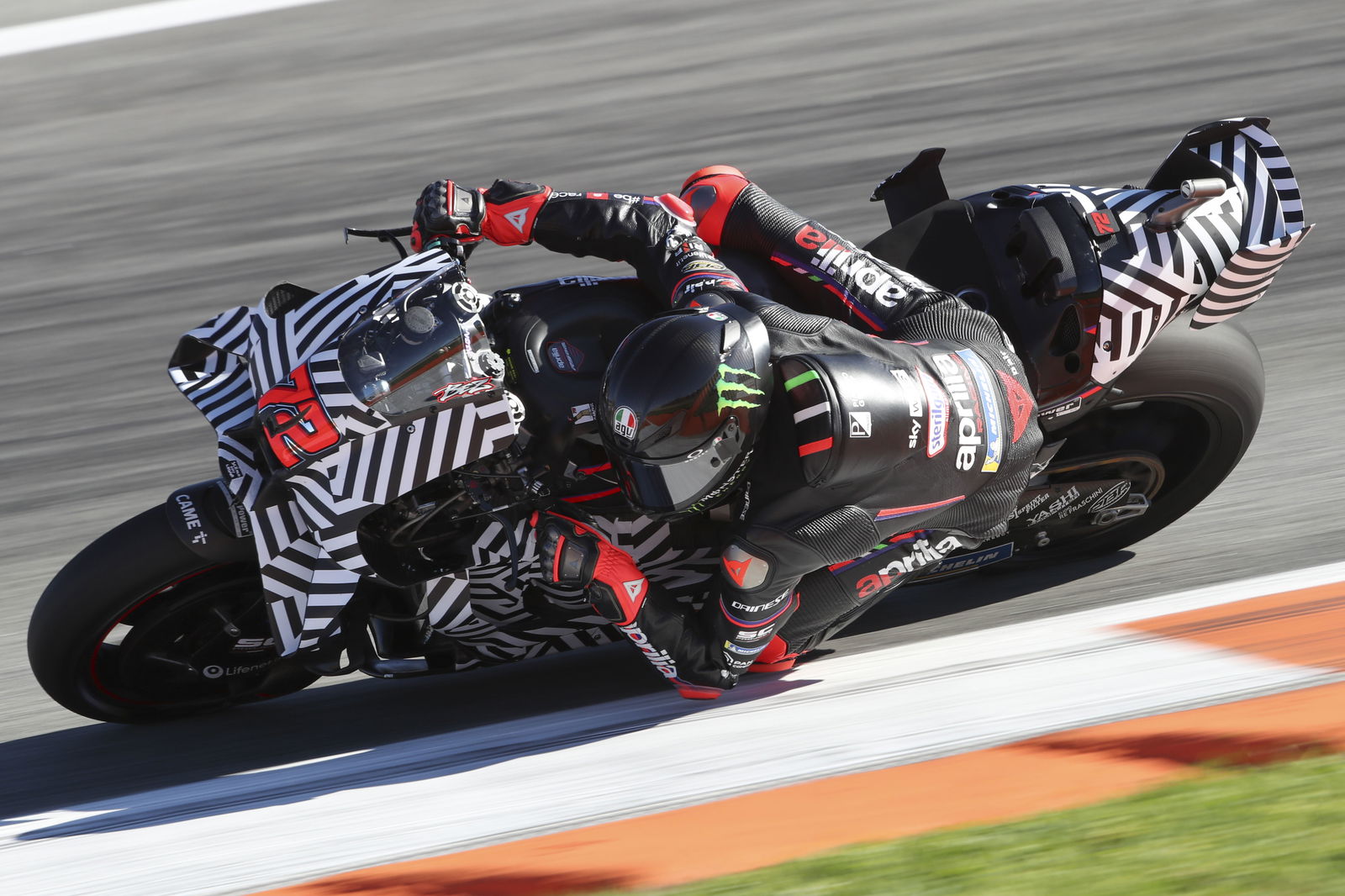Aprilia debuts radical new aerodynamics at Valencia MotoGP test
Aprilia has rolled out a new fairing at the Valencia MotoGP test.

A new fairing has debuted on the Aprilia RS-GP at the Valencia MotoGP test, the first test of the 2026 season.
Aprilia took multiple new fairings to the post-race test in Barcelona at the end of the 2024 season, ultimately favouring one that incorporated small downwash ducts into the bulbous section at the bottom of the main fairing.
This was the fairing that was used for the whole 2025 season by Aprilia, whose only aerodynamic changes introduced during 2025 were located behind the rider, with several iterations of tail unit aerodynamics introduced as well as two versions of the wings that sit just behind the riders legs on the side of the seat unit.
Those side wings remain on the new aerodynamics package introduced in Valencia, but elsewhere there are substantial changes.

Starting at the front, the fairing features a new front wing that does not appear to be integrated into the fairing in the usual way, rather it is supported on two hangers that sit below the air intake, which itself has a revised shape compared to the rectangular version that has been used in the past several seasons.
The wing itself appears to have a marginally more aggressive bend angle. Plus, Aprilia has done away with the dual-element mainplane; and has brought back an upper wing that looks similar in the shape of its endplate to the one that was used in 2024 and abandoned for 2025, but now the main aerodynamic surface of this wing is much more substantial than in 2024.
On the side fairings, there are new downwash ducts. These are now much larger, following a pattern similar to Ducati’s development in this area in the past two-and-a-half seasons. The ducts on either side are also connected under the fairing, their outer edge wrapping underneath the front of the bellypan in a design that is similar to what KTM has run in recent seasons.

Perhaps surprisingly, there are no new front wheel aerodynamics to alter the way the air is being fed into the new ducts.
The wing that comes from the top of the bulbous section and connects to the top part of the side fairing appears to be the same, and the positioning of that top surface is indicative of the slightly changed bend angle of the front wing, whose outside edge now sits slightly below that side wing.
The side fairing also keeps the turning veins on the bulbous section whose purpose is to control airflow and how it spills off the back of the fairing more than about generating downforce themselves.
Behind the main fairing remain the seat wings, but at the very back of the bike is a rear wing unlike anything we’ve seen in MotoGP before.

It’s appearance is quite similar in some aspects, most particularly the endplates, to those seen in the 2009–16 era of Formula One, in that they are very square and flat and do not follow the shape of the seat unit itself – in fact, the endplates extend down far enough to cover the sides of the main tail section of the bike.
Their purpose could be to create mid-corner downforce, which is lost by the removal of the ‘stegasaurus’ wings Aprilia has been iterating upon since mid-season.
Looking at them closely, their profile is similar to that of the endplates of the side wings on the seat, although it’s difficult to tell to what extent the tail endplates are designed to work collaboratively with the side wing endplates.
Between the endplates is a dual-mainplane wing that is curved in the same direction as the front wing, although this is likely about dealing with how the air flows off the back of the on-board camera – something which Yamaha and KTM have done before.
The purpose here is to create straight-up-and-down downforce to generate rear stability in braking, which has been among the areas of most concern to both Marco Bezzecchi and Jorge Martin since they first rode the RS-GP in Barcelona last year.
A second Aprilia rear wing was brought out later in the afternoon with a much different design philosophy. It connects to the sides of the tail section and hoops over the top of the tail in front of where the rear on-board camera sits.

Whether the fairing continues to be used into 2026 will of course be based on today’s (18 November) Valencia test and how it performs there. At time of writing, Marco Bezzecchi is second-fastest on a 1:29.684, 0.093 seconds behind Pedro Acosta.


